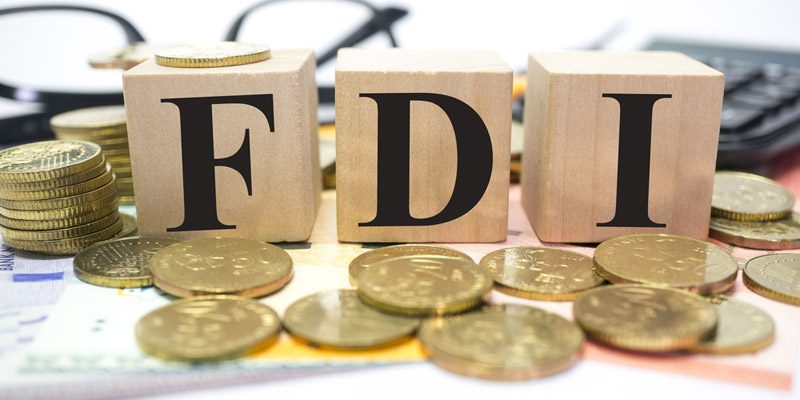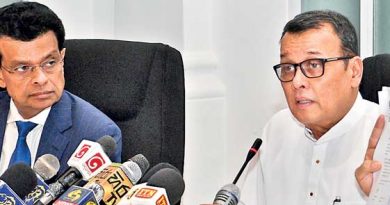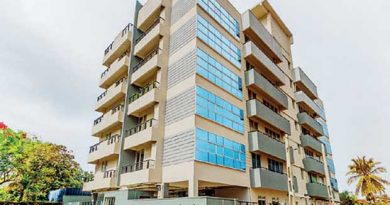(CT) Current Account Deficit widens by 128% Increased FDI needed to reverse trend
Paneetha Ameresekere
The current account deficit increased to US$ 1,466 million during the first half (1H) of 2017, from US$ 644 million in the corresponding period last year, an increase of 128 per cent (US$ 822 million). Against this backdrop, the Central Bank of Sri Lanka (CBSL) released a recent report that stated, “Sri Lanka needs to attract Foreign Direct Investments (FDI) by accelerating reforms to enhance competitiveness, while assuring consistency in policies and political stability.”
According to CBSL, the current account deficit as a percentage of GDP is projected to widen this year to three per cent of GDP from 2.4 per cent of GDP in 2016, but is expected to improve to 2.5 per cent of GDP in 2018.
Additionally, they expect the trade deficit to widen only moderately in the 2H of the year, projecting an increase in exports and moderate growth in imports compared to the corresponding period last year.
The deficit in the trade account widened to US$ 6,186 million during the first eight months of the year from US$ 5,515 million in the corresponding period last year. The total trade deficit for 2016 was US$ 9,090 million. However, the envisaged trade deficit for 2017 was not given by CBSL.
“The widening of the current account deficit, deviating from the expected improvement for the year, was mainly due to increased drought-related imports of fuel and rice, slower pick-up in exports, moderation in tourist earnings, and decline in workers’ remittances,” the CBSL report added, mentioning that the higher importation of gold also contributed to the increase in import expenditure during the period under review.
“Both earnings from exports and expenditure on imports increased during this period. However, the overall trade deficit expanded during the first eight months of the year, owing to a significant increase in import expenditure compared to export earnings,” CBSL elaborated. “Nonetheless, the rebalancing of the trade account is expected to continue and improve further next year.”
Dengue
“This expansion in the current account deficit, vis-à-vis moderate earnings from tourism, was facilitated by the partial closure of the Bandaranaike International Airport for resurfacing of the runway, as well as health advisories related to an increase in dengue cases, and a decline in workers’ remittances amidst the slowdown in Middle Eastern economies,” said CBSL.
CBSL noted the need for an adjustment in the current account through an improved trade balance and higher foreign investment inflows, particularly in the form of export-oriented FDI. FDI, excluding foreign loans to Board of Investment (BOI) companies, increased to US$ 509 million during the 1H of the year, from US$ 173 million during the same period last year.
The tourism, telecoms and infrastructure sectors attracted a major share of FDI inflows during the 1H of the year, CBSL said.
Attracting FDI to Sri Lanka is crucial, since they are non-debt creating and long-term in nature. Hence, Sri Lanka needs to attract FDI by accelerating reforms to enhance competitiveness, while assuring consistency in policies and political stability.
There were several proposals in the Budget 2017 to reach a higher level of FDI, including initiatives such as an allocation to brand Sri Lanka, and establishing the Agency for Development to facilitate foreign investments by providing clearance for BOI projects within 50 days.
The Government introduced a ‘Roadmap for Improving Investment Climate’ in July 2017 with technical assistance from the World Bank, to improve the ease of doing business in Sri Lanka. This road map proposes a single window for new business registration, which will drastically reduce the difficulties in starting up new businesses, said CBSL.
With the envisaged adjustments in the current account of the balance of payments (BOP) and the continuation of inflows to the financial account, CBSL expects the external sector to improve further during the latter part of the year and in the next (2018).
The overall BOP, which recorded a surplus by end September, is expected to be maintained at similar levels by year end and improve further in 2018.
Accordingly, the overall BOP is projected to record a surplus of around US$ 1.5 billion and international reserves are expected to remain at around US$ 7.3 billion by year end.
Last year, the overall BOP registered a US$ 500 million deficit and gross official reserves of US$ 6 billion, equivalent to 3.7 months of imports.
However, CBSL noted that sluggish global growth, a possible increase in commodity prices including crude oil, lower-than-expected FDI inflows, declining trends in workers’ remittances and geopolitical tensions in Sri Lanka’s trading partners are downside risks to the envisaged path in the external sector accounts.
According to CBSL, Sri Lanka’s external sector showed signs of improvement this year, as the pressure on the BOP continued to ease with higher inflows to the financial account despite the increased current account deficit.
They stated that the financial account, which was under pressure due to higher foreign exchange outflows during the first-quarter (1Q) of the year, improved substantially during the 2Q.
Increased investor confidence, brought about by the successful completion of the Second Review of the IMF Extended Fund Facility (IMF – EFF) and the gradual stabilization of US Bond yields, positively contributed to this improvement in the financial account.
GSM
Accordingly, foreign investment in the Government Securities Market (GSM) increased substantially in the 2Q of the year, offsetting the impact of higher withdrawals during the 1Q.
The financial account was also augmented by inflows to the Colombo Stock Exchange, FDI, proceeds of the 11th International Sovereign Bond (ISB) and the foreign currency term financing facility obtained by the Government.
Reflecting these developments, the BOP recorded an overall surplus of US$ 2,037 million by end September 2017. Improved external sector performance facilitated CBSL’s policy of implementing a more market-based exchange rate.
Accordingly, CBSL limited its intervention in the foreign exchange market only to build up international reserves with a minimal impact on the exchange rate. With CBSL’s purchases of US$ 1,161 million from the market on a net basis during the first nine months of the year, the level of gross official reserves improved to US$ 7.3 billion, equivalent to 4.2 months of imports, by end September 2017, from US$ 6 billion at last year’s end.
During the year, up to end September, the external value of the Sri Lankan rupee remained relatively stable, depreciating only by 2.2 per cent against the US dollar. However, CBSL noted, an adjustment in the current account through an improved trade balance and higher foreign investment inflows, particularly in the form of export-oriented FDI, is needed for the recent positive developments in the external sector to be sustained in the medium term.
“There is a gradual increase in interest payments on Government borrowings with new issuances of International Sovereign Bonds (ISBs), as well as borrowings from the foreign currency term financing facility, as the increase in global interest rates affected the cost of borrowing of both the Government and private sector,” said CBSL.
It further said that the deficit in the primary income account continued to expand in the 1H of the year, albeit marginally, mainly due to interest payments on ISBs. The deficit in the primary income account was US$ 1,038 million during the 1H of the year, in comparison to US$ 971 million in the corresponding period of last year.
Total external debt stock increased from US$ 46.6 billion as at last year end to US$ 49.1 billion at end June of this year. The external debt position of the Government of Sri Lanka (GoSL), which is the major component of external debt of the country, increased to US$ 29,697 million as at end June, from US$ 27,197 million at last year end, primarily due to the proceeds of the eleventh ISB issuance of US$ 1.5 billion and proceeds from the first tranche of the foreign currency term financing facility of US$ 450 million.
Project loan inflows to the GoSL also increased, contributing to GoSL’s external debt position. However, the outstanding external debt position of CBSL reduced, with the settlement of the currency swap agreement with the Reserve Bank of India amounting to U$ 400 million, net repayment of the Asian Clearing Union liabilities amounting to US$ 50 million and IMF-Standby Arrangement payments amounting to US$ 187 million during the 1H of the year.
Meanwhile, the external debt stock of deposit-taking corporations increased, primarily due to higher inflows of long term loans. Further, the external debt position of the private sector also increased, mainly due to the increase in trade credit and advances.




